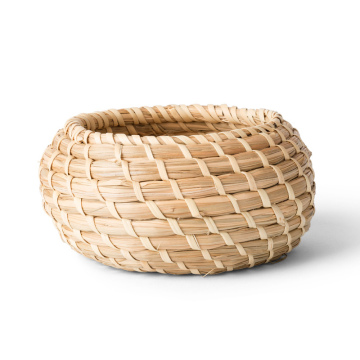Understanding Takoyaki: The Delicious Japanese Dish Famous Worldwide
Takoyaki is one of the most beloved and famous dishes in Japan, enjoyed by locals and visitors alike. This savory street food has become a symbol of Japanese culinary culture, making its way to various corners of the world. Known for its unique taste, texture, and preparation method, takoyaki is much more than just a snack—it’s a cultural experience. With a crispy outer layer and a tender, flavorful filling, takoyaki continues to capture the hearts of food lovers everywhere.
Takoyaki, a delightful combination of dough, octopus, and seasonings, is commonly served in small spherical shapes. It was originally created in Osaka in the 1930s and has grown into a widely appreciated dish, available at food stalls, restaurants, and even in frozen form. What makes takoyaki truly special is its blend of savory and umami-rich flavors, paired with its unique texture that is both crunchy and soft. The culinary magic of takoyaki lies not only in its ingredients but also in the method of preparation, which involves precision and skill. It’s no surprise that this dish has gained recognition on the global culinary stage, becoming a staple in many international food scenes.
The Origins of Takoyaki
The history of takoyaki dates back to the early 20th century in Osaka, where it was first created by a street vendor named Tomekichi Endo. His innovation, originally named "Aizu," was inspired by a combination of existing Japanese snacks, such as "ikayaki" (grilled squid) and "chowder-like" savory dishes. This creation evolved into what we know today as takoyaki, thanks to the influence of local street food culture and culinary experimentation. The dish became increasingly popular in Osaka, where it was perfected and mass-produced, eventually making its way to other parts of Japan and, later, the world.
Takoyaki’s rise to fame can also be attributed to its versatility and ability to adapt to different regional tastes. Over the years, various versions of takoyaki have emerged, incorporating a wide range of fillings, toppings, and sauces, catering to different preferences. However, the core of the dish remains the same: a batter-based dough filled with octopus, garnished with bonito flakes, pickled ginger, and a signature sauce. This consistency, combined with its unique preparation and culinary appeal, has made takoyaki a standout in Japan’s food culture.
Moreover, the popularity of takoyaki has spread globally, partly due to Japan’s rising influence on global food trends. In major cities around the world, Japanese food enthusiasts and culinary innovators have taken to creating their own versions of takoyaki, introducing new ingredients or twists while staying true to its fundamental structure. This global adaptation has allowed takoyaki to become a well-loved snack far beyond Japan’s borders.
Ingredients That Make Takoyaki Special
At the heart of takoyaki’s culinary appeal are its fresh and flavorful ingredients. The base of takoyaki consists of a batter made from flour, eggs, dashi (a type of stock), and other seasonings, which together form a light and crispy exterior once cooked. Inside the batter is a piece of octopus, typically cooked beforehand and cut into small, bite-sized pieces. The use of octopus is a key factor that gives takoyaki its distinctive savory flavor, making it a favorite among seafood lovers.
Takoyaki’s toppings further enhance its culinary profile. The batter and octopus are complemented by a drizzle of takoyaki sauce, which is a sweet and savory concoction made from soy sauce, sugar, and other ingredients. Additionally, the dish is often topped with bonito flakes, which are thin, dried fish shavings that flutter as they are placed atop the hot takoyaki. This garnish adds an extra layer of umami, further highlighting the deep flavors of the dish. Pickled ginger and green onions are often added as well, offering a refreshing contrast to the rich, savory taste of the takoyaki.
While the classic takoyaki includes octopus, regional variations sometimes replace it with other fillings, such as shrimp, cheese, or even vegetables. These substitutions cater to different dietary preferences while still maintaining the core concept of the dish. Despite these variations, the balance of flavors and textures remains the defining characteristic of a perfect takoyaki, and culinary experts emphasize the importance of achieving the right mix of crispy exterior and soft, gooey interior.
Takoyaki as a Street Food Phenomenon
In Japan, takoyaki is often enjoyed as street food, sold at food stalls and markets, particularly during festivals. The process of making takoyaki is both an art and a performance. Vendors skillfully pour the batter into round molds and carefully turn the takoyaki balls to ensure even cooking. The sizzling sound and the aroma of the takoyaki being prepared create an irresistible allure for passersby. This experience has become an iconic part of Japanese culinary culture, with people eagerly lining up to savor this beloved snack.
The popularity of takoyaki as street food is not just about the taste; it is about the atmosphere and the experience of enjoying it outdoors. Many takoyaki vendors create a fun, lively environment where customers can watch the cooking process and chat with the vendors. This interactive experience enhances the culinary joy of eating takoyaki, making it a social activity as much as a food indulgence. The ability to enjoy this dish casually, while strolling through a market or festival, makes it a beloved snack for people of all ages.
With the increasing demand for street food worldwide, takoyaki has transcended its origins and is now available in many cities globally. Food trucks, specialty restaurants, and pop-up stalls featuring this tasty dish have gained popularity, allowing more people to experience the joy of takoyaki. As Japanese culinary traditions continue to inspire the world, takoyaki remains at the forefront of this culinary revolution, offering a bite of Japan’s rich street food culture to food lovers everywhere.
The Global Impact of Takoyaki
Takoyaki’s influence has spread far beyond Japan’s borders, with its rich flavors and interactive preparation process capturing the attention of food enthusiasts worldwide. In countries across Asia, Europe, and North America, takoyaki has become a beloved snack at Japanese restaurants, food courts, and street food festivals. Its rise to international fame is a testament to the growing global appreciation for Japanese cuisine and culinary traditions.
In many regions, takoyaki has been embraced and adapted to local tastes. While some places stick to the traditional recipe, others have introduced new variations, incorporating regional ingredients or even vegan options. The diverse interpretations of takoyaki demonstrate the versatility of the dish, proving that it can be both authentic and innovative. Despite these variations, the essence of takoyaki remains the same: a delicious combination of crispy, chewy, and savory elements that create a satisfying culinary experience.
Furthermore, the global spread of takoyaki has contributed to the growing trend of Japanese food fusion, where chefs experiment with traditional dishes by incorporating global influences. As the demand for unique culinary experiences continues to rise, takoyaki is sure to remain a key player in the international food scene. Its culinary journey is just beginning, and it will continue to inspire food lovers around the world for years to come.











